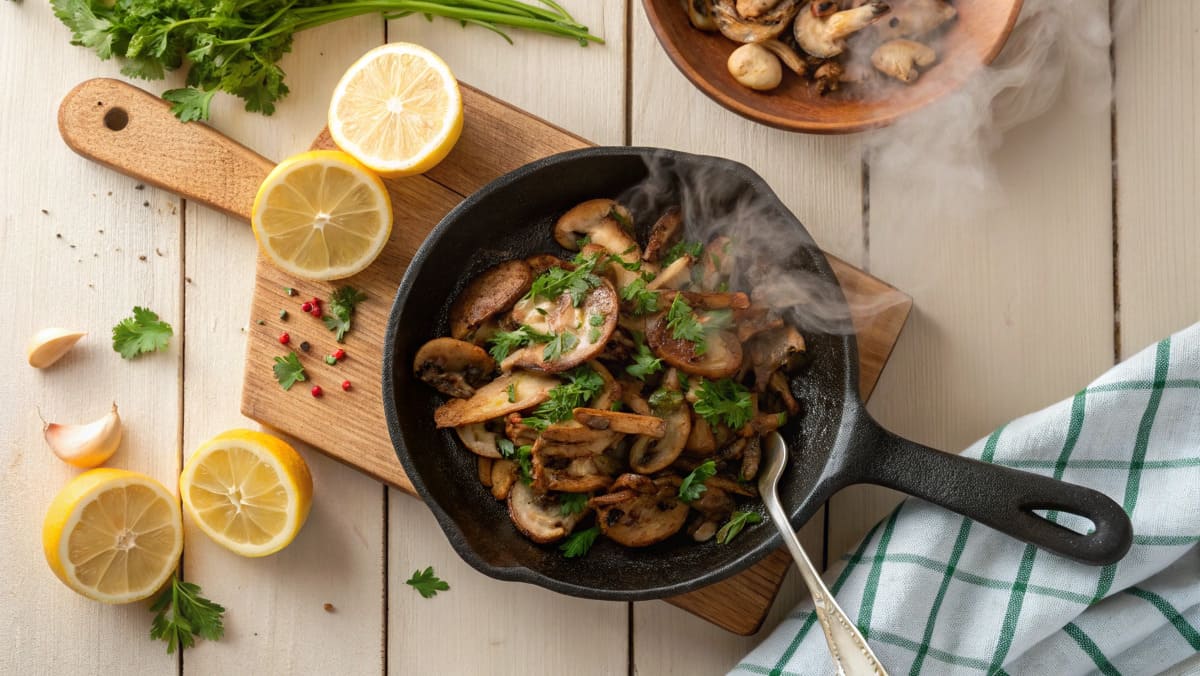Baking a perfect pecan pie is all about timing. If you pull it out of the oven too early, the filling remains runny and doesn’t set properly. Leave it in too long, and you risk an overcooked, dry, or cracked texture. Understanding why timing is critical for baking pecan pie can mean the difference between a luscious, gooey filling and a disappointing dessert.
In this guide, you’ll learn how to recognize when your pecan pie is done, the risks of underbaking and overbaking, and the best tips for achieving that perfect balance between firm yet soft, caramelized yet creamy.
Why Timing Is Critical for Baking Pecan Pie
Baking pecan pie is a delicate balancing act, where precision in timing is just as important as the ingredients themselves. Unlike traditional pies that rely on fruit fillings or dense cake layers, pecan pie is custard-based, meaning its structure depends on eggs, sugar, butter, and corn syrup binding together at the right temperature.
If baked too little, the filling remains soupy and unstable, making it impossible to slice properly. If baked too long, the custard can become grainy, rubbery, or overly firm, and the pecan topping can turn burnt and bitter.
Why Timing Matters
Getting the timing just right ensures:
✔ A fully set, yet gooey filling – The filling should be firm but still slightly soft, ensuring that it holds together without being runny.
✔ Perfectly caramelized pecans – Baking for the right duration allows the sugars in the filling to caramelize, creating a rich, buttery flavor and glossy finish.
✔ A flaky, golden crust – The pie crust should be crisp and evenly baked, without burning before the filling is done.
✔ A dessert that holds its shape – A properly baked pie slices cleanly, with a smooth, custard-like filling that doesn’t collapse or ooze excessively.
The key is balance: Bake too short, and your pie won’t set; bake too long, and you’ll lose the silky texture that makes pecan pie irresistible.
The Science Behind Pecan Pie Timing
Pecan pie filling behaves like a custard, meaning the eggs play a crucial role in thickening the mixture as it bakes. The perfect bake time ensures that:
🔹 The eggs fully coagulate – This helps the filling firm up without curdling or becoming grainy.
🔹 The sugar caramelizes properly – The rich, buttery flavor comes from the sugars melting and thickening into a syrupy consistency.
🔹 The pecans toast without burning – Overbaking causes the nuts to become too hard or bitter, ruining their delicate crunch.
Because of these scientific factors, pecan pie requires careful monitoring in the oven to achieve the ideal texture and flavor.
How to Avoid Common Timing Mistakes
Now that you understand why timing is so important, let’s explore the most common mistakes bakers make—and how to fix them:
1️⃣ Undercooking: A Runny, Liquid Filling
🛑 What Happens? The pie is too loose, making it difficult to slice or serve.
✔ Solution: Look for a slightly jiggly but not liquid center and use a thermometer to confirm an internal temperature of 200°F (93°C).
2️⃣ Overbaking: A Dry, Cracked Filling
🛑 What Happens? The filling turns rubbery, overly firm, or even cracked on top.
✔ Solution: Remove the pie when the edges are firm but the center still has a slight wobble—it will continue to set as it cools.
3️⃣ Burning the Pecans
🛑 What Happens? The pecans on top become bitter, overly dark, or too hard.
✔ Solution: If your pecans are browning too fast, loosely cover the pie with foil during the last 15 minutes of baking.
4️⃣ Overbrowning the Crust
🛑 What Happens? The edges of the crust burn before the filling is fully baked.
✔ Solution: Use a pie shield or aluminum foil to cover the crust edges halfway through baking.
The Risks of Undercooking Pecan Pie
An undercooked pecan pie is one that hasn’t fully set. Instead of a smooth, sliceable custard, the filling is loose, liquidy, or even watery.
Why This Happens:
🔸 The eggs haven’t coagulated enough to firm up the filling.
🔸 The sugars didn’t caramelize completely, leaving a grainy texture.
🔸 The pie was removed too soon, preventing the center from setting.
How to Avoid Undercooking:
✔ Use the jiggle test – The pie should wobble slightly in the center, but not slosh.
✔ Check the temperature – The filling should reach 200°F (93°C) using a food thermometer.
✔ Bake long enough – Most pecan pies need 50–60 minutes at 350°F (175°C).
✔ Let it cool completely – The filling continues to firm up as it cools.
💡 Pro Tip: If your pie is too runny after cooling, return it to the oven at 325°F (160°C) for 10–15 minutes.
The Risks of Overbaking Pecan Pie
On the other hand, overbaking can lead to a dry, cracked, or rubbery filling with a burnt flavor.
Common Overbaking Mistakes:
❌ Waiting until the center is completely firm before removing the pie.
❌ Ignoring browning pecans or crust, which indicates excessive heat exposure.
❌ Not covering the edges – The crust overcooks before the filling is done.
How to Prevent Overbaking:
✔ Remove the pie when the center still jiggles slightly – Residual heat will finish the baking process.
✔ Use a pie shield or foil to protect the crust and pecans during the last 15 minutes of baking.
✔ Check at the 50-minute mark and continue baking in 5-minute increments if necessary.
How to Tell When Your Pecan Pie Is Fully Baked
Achieving the perfect pecan pie comes down to recognizing clear signs of doneness.
1. The Filling Is Set with a Slight Jiggle
✔ How to Check: Gently shake the pie pan. The edges should be firm, while the center has a slight wobble (similar to Jello).
✔ Why It Works: The center will continue to firm up as it cools, resulting in a perfect custard texture.
💡 Pro Tip: If the filling is still soupy or shifts like liquid, it needs more time.
2. The Pecan Topping Is Glossy and Caramelized
✔ What to Look For: The pecans should be toasted and shiny with a deep, golden-brown color.
✔ Why This Matters: A glossy finish means the filling has caramelized properly, creating that rich, buttery flavor.
💡 Pro Tip: If the pecans are browning too fast, cover the pie loosely with foil for the last 15 minutes.
3. The Crust Is Golden Brown and Crisp
✔ What to Check: The edges should be golden and firm, not pale or soggy.
✔ Why This Matters: A properly baked crust adds structure and flakiness, enhancing the overall texture.
💡 Pro Tip: If the crust is underdone, try blind baking it for 10 minutes before adding the filling.
4. Internal Temperature Reaches 200°F (93°C)
✔ How to Check: Insert a thermometer into the center of the pie (avoid touching the pecans or crust).
✔ Target Temperature: 200°F (93°C) ensures the custard is fully cooked.
💡 Pro Tip: If you frequently bake pies, investing in a kitchen thermometer will guarantee perfect results every time.
Additional Timing Tips for the Perfect Pecan Pie
To master pecan pie baking, timing adjustments may be necessary depending on certain factors:
1. Know Your Oven
🔥 Ovens can vary in temperature by 10–15 degrees. Use an oven thermometer for accuracy.
2. Check Early and Often
🕒 Start checking your pie 5–10 minutes before the recommended bake time to avoid overbaking.
3. Factor in Cooling Time
🛑 The pie continues to set as it cools, so taking it out at the right moment is crucial. Let it cool for at least 2 hours before slicing.
How Long Should You Bake a Pecan Pie?
Baking pecan pie at 350°F (175°C) typically takes 50–60 minutes, but the exact bake time can vary based on several factors. While following a set time range is helpful, it’s equally important to monitor your pie for doneness using visual, tactile, and temperature cues.
Factors That Affect Bake Time
Even though most recipes suggest a standard bake time, your oven and baking environment can influence how long it actually takes for your pecan pie to bake perfectly.
🔸 Pie Dish Material Matters
The type of baking dish you use plays a crucial role in how evenly and quickly your pie bakes:
- Glass and ceramic pie dishes retain heat longer than metal, meaning your pie will continue cooking after you remove it from the oven. If using glass or ceramic, you may need to reduce baking time by 5 minutes to prevent overcooking.
- Metal pie pans conduct heat more efficiently, often resulting in a faster and more even bake. These are great for crispy, golden crusts but require checking your pie earlier to avoid overbaking.
💡 Pro Tip: If switching from metal to glass, lower your oven temperature by 10-15°F (5-7°C) to prevent the pie from baking too quickly.
🔸 Altitude Adjustments
Baking at higher altitudes (above 3,000 feet) requires modifying your recipe because the lower air pressure affects how liquids evaporate and how custards set.
- At higher altitudes, pies tend to bake faster because moisture evaporates more quickly, which can cause the filling to firm up too soon or become grainy.
- To compensate, you may need to reduce baking time slightly and increase the oven temperature by 5–10°F (3–5°C) to help the filling set properly.
💡 Pro Tip: If baking at high altitude, check your pie 5–10 minutes earlier than normal and adjust as needed.
🔸 Every Oven Is Different
Even when set to 350°F (175°C), not all ovens heat accurately. Some ovens run hotter or cooler, leading to inconsistent baking times.
- An oven thermometer can help verify if your oven is actually at the correct temperature.
- If your oven runs hot, your pie may be done earlier, so start checking for doneness at 45 minutes instead of 50.
- If your oven runs cold, your pie may take closer to 60–65 minutes to fully bake.
💡 Pro Tip: Always trust the signs of doneness—jiggly center, set edges, glossy pecans, and an internal temperature of 200°F (93°C)—rather than relying solely on a timer.
The Best Way to Determine If Your Pecan Pie Is Done
While the 50–60 minute bake time is a helpful guideline, the best way to know if your pecan pie is done is to look for key indicators of doneness:
✅ The filling has a slight jiggle in the center but is firm around the edges.
✅ The pecans on top are glossy and caramelized, but not burned.
✅ The crust is golden brown and crisp.
✅ The internal temperature reads 200°F (93°C) when tested with a thermometer.
By considering these factors and signs of doneness, you can ensure your pecan pie bakes to perfection—every single time! 🥧✨
Storing and Serving Your Pecan Pie
Once your pecan pie is perfectly baked, follow these steps to keep it fresh and delicious:
1. Let It Cool Completely
✔ Allow at least 2 hours at room temperature before slicing.
✔ This ensures the filling sets properly for clean, neat slices.
2. How to Store It
✔ Room Temperature: Store for up to 2 days covered with foil or plastic wrap.
✔ Refrigerator: Keeps fresh for 4–5 days (best if chilled overnight).
✔ Freezer: Wrap tightly and freeze for up to 2 months—thaw overnight in the fridge before serving.
Final Thoughts: Timing Is Everything for the Perfect Pecan Pie
Mastering why timing is critical for baking pecan pie will help you achieve a dessert that’s gooey yet firm, sweet yet balanced, and always irresistible. By following visual cues, temperature checks, and best baking practices, you’ll never have to guess when your pecan pie is ready again!
Ready to elevate your pie game? Try these delicious variations:
🥧 Classic Pecan Pie Recipe – A foolproof version with perfect timing!
🍫 Chocolate Bourbon Pecan Pie – A decadent twist for chocolate lovers.
🧀 Pecan Cheesecake Pie – The ultimate fusion of pecan pie and creamy cheesecake.
Happy baking! 💛🥧




